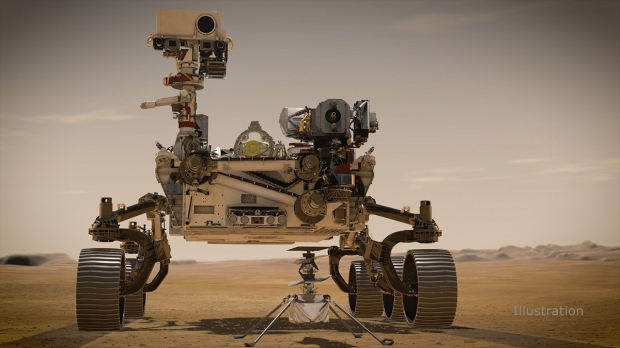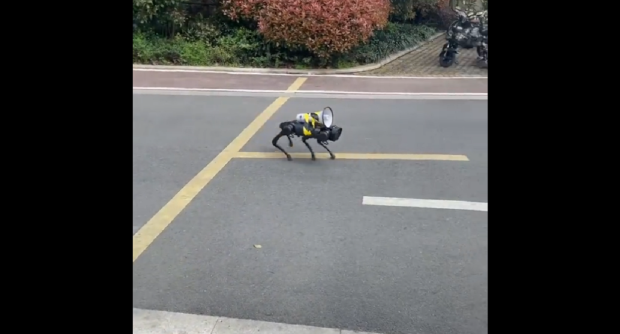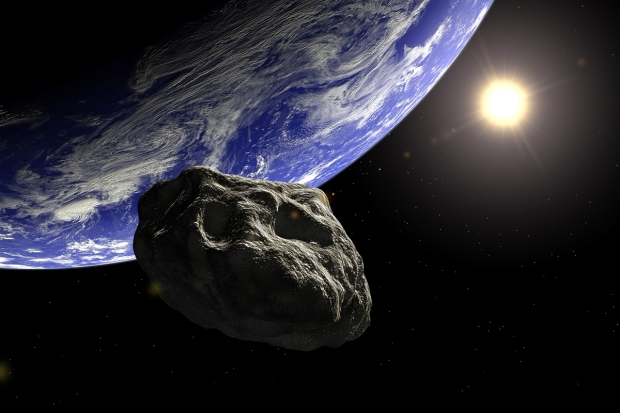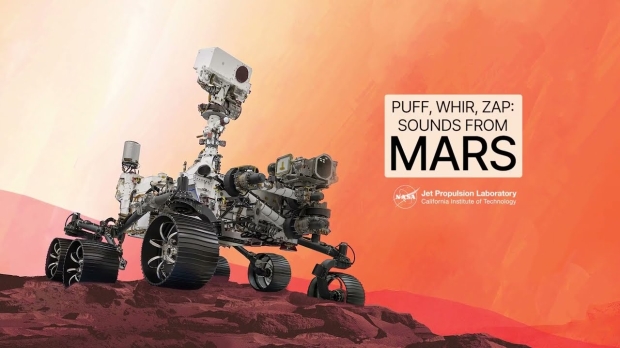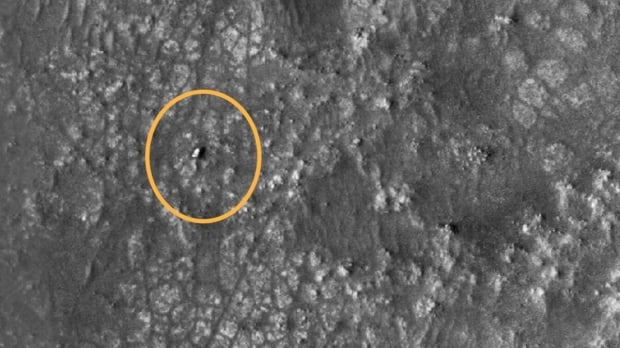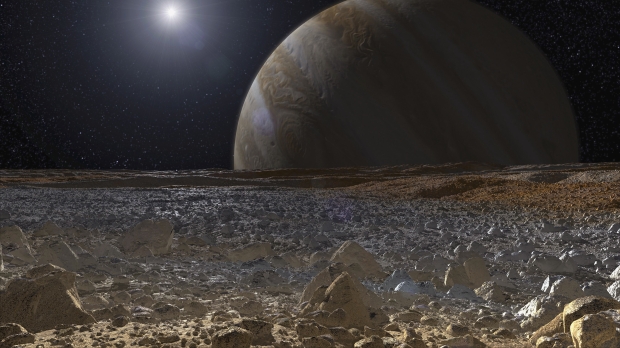Science, Space, Health & Robotics News - Page 165
NASA breaks two records on the surface of Mars with its newest rover
NASA has announced that it has broken two records on the surface of Mars with its newest Mars rover called Perseverance.
According to NASA JPL, the Perseverance rover has recently broken two records, the first record being the longest drive in a single solar day, and the second being the longest AutoNav drive. The space agency announced that Perseverance has broken the previous record of 748 feet set by the Opportunity rover in March 2005. Now, Perseverance holds the record by recently completing a drive of 803 feet.
NASA also announced that Perseverance has broken its own record for the longest AutoNav drive, which is the rover's self-driving function. As you can probably imagine, Perseverance's AutoNav function allows for the rover to drive across the Martian surface autonomously using 3D maps and advanced software that maps any potential obstacles around Perseverance. With autonomous driving, Perseverance can move 393 feet in an hour.
Continue reading: NASA breaks two records on the surface of Mars with its newest rover (full post)
China's police robot dog barks orders at people to stay at their homes
A video has surfaced online that shows a remote-controlled robot dog walking down a street in China, barking orders and making announcements.
The above video posted by Jay In Shanghai shows a robot dog walking down a street in Shanghai, China, and attached to the dog via some kind of strap is a megaphone that can be heard making announcements. Shanghai is currently facing one of its most severe waves of COVID-19 as Chinese health officials have reported record numbers of new cases following an outbreak of the Omicron variant.
The robot dog seen in the above video is barking out COVID-19-related announcements to residents, most likely informing them that they must stay within their homes at all times, with Reuters reporting that Chinese residents in the affected area aren't even allowed to leave their home to take their garbage out. Reports indicate that Shanghai has recorded less than 8,000 asymptomatic COVID-19 cases and 438 symptomatic cases as of April 3.
Continue reading: China's police robot dog barks orders at people to stay at their homes (full post)
Scientist that created first gene-edited babies released from prison
The scientist that was busted for creating what could be considered the first gene-editing human babies has recently been released from prison.
A story emerged in 2018 about a scientist that used a technology called CRISPR that is designed to identify a specific bit of DNA within a cell and alter it. Additionally, the CRISPR technology is capable of turning specific genes on and off, and due to this technology's incredible power, many scientific and ethical concerns have been raised, especially after Chinese scientist He Jiankui was found guilty of using CRISPR to edit the genes of IVF embryos that were planted into a woman's uterus that later birthed into twin girls.
The scientist altered the genes of the twin girls to be resistant to infection of HIV, which the father of the children had. He Jiankui lost his position at the Southern Universe of Science and Technology in China, and was convicted in December 2019, where he was imprisoned for around three years, according to TechnologyReview. The publication reports that He has been released from prison, according to people "familiar with the situation" and that when recently called, he said, "It's not convenient to talk right now".
Continue reading: Scientist that created first gene-edited babies released from prison (full post)
NASA database confirms mile-wide asteroid will approach Earth in May
NASA's database that tracks all of the detected space rocks that could pose a threat to Earth indicates that an asteroid with an estimated diameter of about a mile is due to approach Earth soon.
NASA's Center for Near-Earth Studies (CNEOS) database lists the asteroid called 7335 (1989 JA), and states that its estimated diameter based on past measurements is 1.8 kilometers or 1.1 miles. The asteroid was first observed in 1989 by Helin, E. F. at Palomar and was last observed on March 26, 2022. 1989 JA will be the largest asteroid to approach Earth in 2022, and NASA expects that it will safely fly past our planet at a distance of 2.5 million from Earth or 0.02690 astronomical units.
Before 1989 JA arrives near Earth, another large asteroid called 2008 AG33 will approach Earth on April 28, and that asteroid is estimated to be anywhere between 1,083 feet and 2,428 feet in diameter. 2008 AG33 will be traveling at around 23,200 miles per hour when it flies safely past Earth at a distance of around two million miles.
Continue reading: NASA database confirms mile-wide asteroid will approach Earth in May (full post)
NASA confirms 1,000+ foot-wide asteroid will approach Earth this April
An asteroid that is estimated to be one of the largest space rocks to approach Earth throughout 2022 will be making its close approach to Earth this month.
The asteroid is called 418135 (2008 AG33), and according to data from NASA's Center for Near-Earth Studies (CNEOS), the space rock will be making its closest approach with Earth on April 28 at 2:46 AM UTC, where it will come within two million miles of Earth. While two million miles is certainly quite a distance, in astronomical terms, it's relatively small, with the moon being an average 238,000 miles away from Earth and Mars being 140 million miles from Earth.
2008 AG33 is estimated to be anywhere between 1,083 feet and 2,428 feet in diameter, and if the asteroid's higher estimate is more accurate, it would mean that 2008 AG33 is as wide as two Empire State Buildings stacked on top of each other. If its diameter is closer to 1,083 feet, it would mean it's the same size as the Eiffel Tower. NASA's database reveals that there is an even larger space rock on its way, with its diameter estimated to be 1.1 miles across.
Continue reading: NASA confirms 1,000+ foot-wide asteroid will approach Earth this April (full post)
Russia abandons Chernobyl after troops suffer radiation poisoning
US and Ukrainian officials have claimed that abandoned Chernobyl nuclear power plant has been re-taken by Ukraine.
Within the first days of Russia's invasion it took the Chernobyl nuclear power plant causing major concern across Europe for the safety of the plant and the busted nuclear reactor that caused one of the worst nuclear disasters ever. Since Russia's invasion officials have reported interruptions with monitoring the reactor and that radiation levels around the plant have dramatically spiked due to forest fires.
Now, reports are surfacing that Russia has pulled out of Chernobyl and that on April 2 at 11:00 the Ukrainian flag was raised over the defunct power plant. The retreat from Russia follows reports of numerous Russian troops suffering from radiation poisoning with Ukrainian officials saying that they inhaled radioactive dust and were unaware of the dangers of the area.
Continue reading: Russia abandons Chernobyl after troops suffer radiation poisoning (full post)
Scientists have discovered not one, but two speeds of sound on Mars
A study on the speeds of sound on Mars titled "In situ recording of Mars soundscape" has been published in the journal Nature.
The Perseverance rover on Mars has recorded over five hours of sound using its microphones after landing on Mars in February last year. Perseverance recorded sounds made by the flying Ingenuity helicopter that accompanies the rover and sounds from its laser that it uses to analyze the chemical composition of Martian rock samples.
The research team found that sound travels roughly 240 meters per second on Mars, compared to 340 meters per second on Earth. Mars is expected to have a slower speed of sound, as its atmosphere is about a hundred times thinner than Earth's, with carbon dioxide making up 95% of it compared to 0.04% carbon dioxide in Earth's atmosphere, which also results in sounds becoming roughly 20 decibels weaker.
Continue reading: Scientists have discovered not one, but two speeds of sound on Mars (full post)
NASA satellite spots helicopter flying on Mars' surface
The Ingenuity Mars helicopter that accompanies the Perseverance rover has been spotted by a satellite orbiting the Red Planet.
NASA's Mars Reconnaissance Orbiter (MRO) spotted Ingenuity with its HiRISE camera, which can capture 28-gigabit images in only six seconds. Ingenuity's rotors only span four feet (1.2 meters), making the image an impressive capture. HiRISE is often used to track the status of assets on Mars.
Currently, the Perseverance rover is located on fractured bedrock, which makes up the Maaz Formation. The rover is traversing over the formation, which is likely of volcanic origin, to reach a deltaic deposit several kilometers to the north.
Continue reading: NASA satellite spots helicopter flying on Mars' surface (full post)
Scientists have finally made the first complete human genome sequence
A study on the genome sequencing titled "Complete genomic and epigenetic maps of human centromeres" has been published in the journal Science.
In 2003 the human genome was claimed to have been fully sequenced by scientists, but until recently, roughly eight percent of the genome had yet to be completely sequenced. The remaining DNA to sequence was mostly repetitive and difficult to align with the rest of the genome. A new complete genome has now been assembled by the Telomere-to-Telomere (T2T) consortium, dubbed T2T-CHM13, and succeeds the previous reference genome known as GRCh38.
"In the future, when someone has their genome sequenced, we will be able to identify all of the variants in their DNA and use that information to better guide their health care. Truly finishing the human genome sequence was like putting on a new pair of glasses. Now that we can clearly see everything, we are one step closer to understanding what it all means," said Adam Phillippy, one of the leaders of T2T and a senior investigator at the National Human Genome Research Institute (NHGRI) of the National Institutes of Health.
Continue reading: Scientists have finally made the first complete human genome sequence (full post)
Life could be growing on one of Jupiter's oxygen-rich moons
A new study on the moon titled "Downward Oxidant Transport Through Europa's Ice Shell by Density-Driven Brine Percolation" has been published in the journal Geophysical Research Letters.
Europa is one of Jupiter's many moons and has a frozen surface with an ocean hidden just beneath. A new study indicates this ocean may be warm, salt-filled, and capable of fostering life. The research indicates the potential for oxygen to be pulled down into the subsurface ocean from the surface, where organisms could use it to sustain life.
Europa already has more than enough water for one of the essential ingredients to fuel life as we know it, having more water on it than Earth has in all of its oceans. Various chemical nutrients are also available, and tidal flexing from Jupiter provides the energy necessary to heat the moon's interior and prevent the subsurface ocean from freezing.
Continue reading: Life could be growing on one of Jupiter's oxygen-rich moons (full post)


